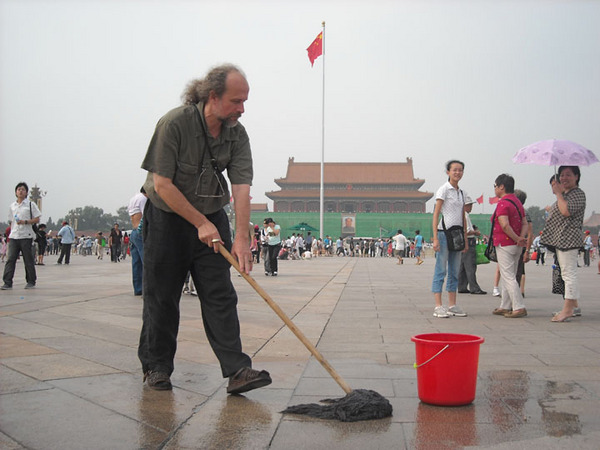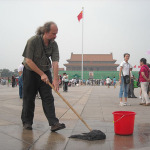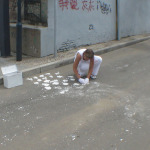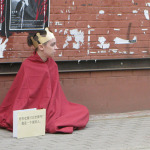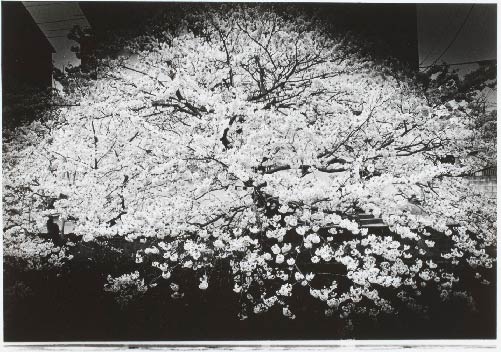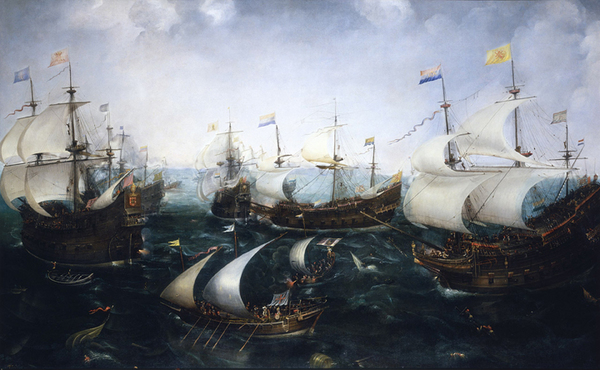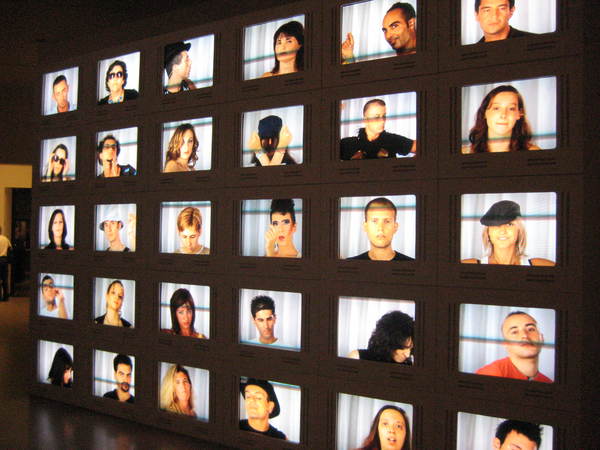Over fifteen artists from Boston's vibrant performance art scene have made it all the way here to Beijing for what is the largest performance art festival in China, ever. The annual "Open Art Realization Performance Art Festival" is celebrating its tenth anniversary this summer with a marathon eight week programme. Over three hundred artists have been invited to the 798 Art District in the Chinese Capital, beginning early August and concluding somewhat paradoxically, just before the Communist Party's sixtieth anniversary celebrations begin in early October.
Bostonians are making a noticeably strong impact with typically eclectic performances that draw on a diverse array of styles and techniques and which investigate such themes as political liberty, spiritual commoditisation and the conflict between modern and ancient culture. Such themes have resonated strongly with the Chinese audience and helped remind the international art community that Boston is still a pivotal player in the world of contemporary arts. I caught up with a few of the visiting artists to discuss their work here in Beijing.
I began by asking the artists what the early impressions were of Beijing and specifically the 798 art district.
"Beijing is like Mexico City except you can't see the poverty," says Vela Phelan, a Mexican artist who has lived, studied and worked in Boston for eleven years. "But 798 - wow! I have not experienced anything like it before. I see all my fantasies and dreams of buildings and art come true. I definitely had high expectations but the architecture and treatment of the buildings has been mind-blowing and deeply satisfying."
Daniel Deluca, a Massachusetts born graduate of Boston College of Art and Design, as well as Boston based performance artists, Alisia Waller and Alice Vogler, all expressed similar delight at the outward appearance of rejuvenated factory space but also expressed some reservations regarding the commercialization of the whole area.
"It's a wonderful space for artists," says Waller, "but you can see an old story taking place. First the squatters and artists move in to an area and make it cool and then commercial interests come into play and force a lot of the originating artists out."
Controversial, Boston based art-activist Milan Kohout's first performance saw him mopping Tiananmen Square. "It is dirty place in Chinese history. I was symbolically washing away the unwashed blood of the massacred student activists." His art is consistently allegoric of his anti-establishment views and Kohout quickly gives the 798 area a political reading.
"I have the feeling the government likes this district very much. The space is confined. There is even a policeman at the gate. It's the ideal situation. Every government likes to control its opposition, that way they can get ready for the counter punch. The biggest fear for any government is uncontrolled decent."
After discussing Beijing, I began to quiz the artists regarding their performances specifically.
"I went to the Lama Temple," said Vela Phelan whose performance 'Fantasy Buddha' saw hip decorate a statue of the Buddha with pop culture iconography. "It was incredibly inspiring to see these ancient, personified Gods. I'm intrigued by what made us give physical form to Gods. In modern culture there are echoes of ancient mysticism. That's what I bring from America. Modern 'pop Gods' like Mickey Mouse, Spiderman and E.T."
While Phelan performed inside, his wife Alice Vogler was concluding her durational piece outside the art space. "A lot of my pieces push to see how far audience members will go," she says afterwards. Vogler's performance 'Open Expansion Control' took place throughout the 798 art district. During her performance Vogler laid out piles of sugar in a certain formation then cleared the sugar away and moved to another location. "I was thinking about expansion and contraction and how that reflected China's movements outwards and inwards."
Daniel DeLuca also took inspiration from China. "I spent a lot of time travelling in the South thinking about how to communicate something. Seeing farmers using primitive tools, artefacts essentially, I grew intrigued by the contrast between the modern and the ancient worlds that coexist in China."
DeLuca took a rock from a river in Guizhou Province and bought some hand made silk which he fashioned into a rope. His performance in Beijing entailed him swinging the rock about his head whilst parading around a large piece of glass, invoking great tension for the onlookers who anticipated that he'd eventually smash the glass.
"Originally I wanted the rock to smash the glass. But then I thought that would represent a coalition. I wanted to explore the tensions that exist by two strong pressures living close together." DeLuca concluded his performance by tying the rock around the pane of glass, much to the relief of the spectators.
I wound up my interview by asking the artists how the China they had experienced compared with the China represented in the U.S.
"You ask me if there is any difference!" exclaims Alisia Waller. "The question should be: are there any similarities? What has previously been represented to me is government or economics. Images of capitalism or images of poverty. The media provides no pictures of human beings in China."
"The personal experience breaks down assumptions of fear," says Alice Vogler. "I've felt very welcomed and safe here whereas in Latin America there was always a level of danger."
I ask Milan Kohout if he feels his political tinged art is threatening the future of the Open Art Festival.
"Its not dangerous," he says shaking his head. "They'll probably tolerate it. The contemporary Chinese government is very clever; they know how to play games. They would be stupid to stop it." He does concede that he is testing the limits of what is acceptable in China, which perhaps sums-up what the Boston artists have achieved here. They have tested the limits of where and how a piece of performance art takes place and to what extent the audience and artist are distinct. Common conceptions of traditional religious practise and modern consumer culture, two hot debates in China, have been juxtaposed. The limit of political tolerance in this rapidly changing nation has been tested. But most significant of all Bostonians have succeeded in taking inspiration from their new environment, and with patronizing their hosts; the artists have provided Beijing with uncompromising, informed and compelling performance art.
- Milan Kohout, Cleaning Tian’anmen Square, 2009
- Alice Vogler, Open Expansion Control, 2009
- Alisia Waller, Begging for Clothes, 2009
The 10th Open International Performance Art Festival
"The 10th Open International Performance Art Festival" is on view August 5 - September 27, 2009 in Beijing, China
All images are courtesy of the artists.

